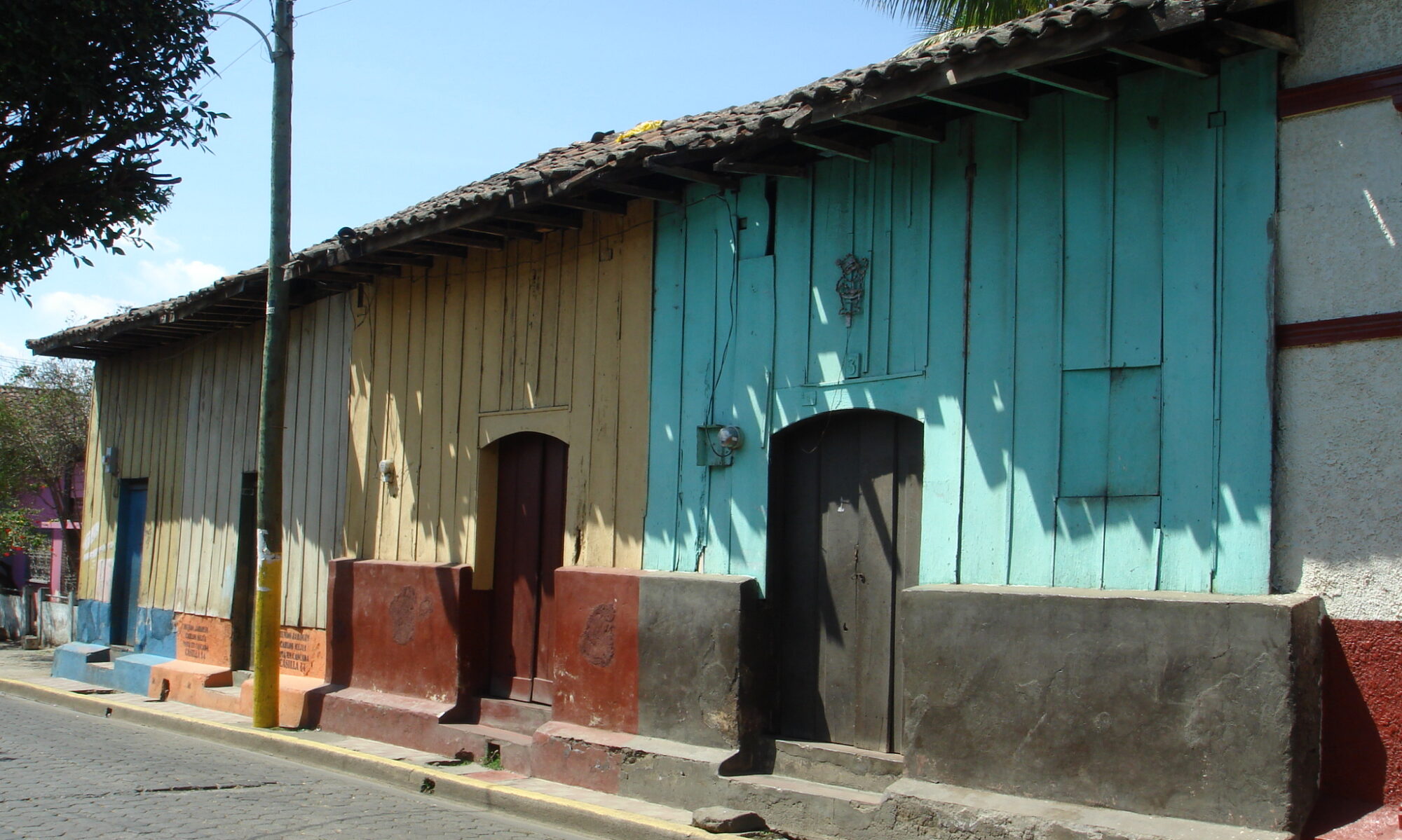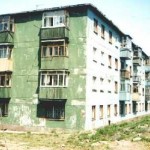by Su C. Tung, George C. Yao

This is an urban housing construction. Typically, these are 12-story apartment buildings with a parking area in the basement. The first and second floor are classified as Open Space (OS) and the ground floor is used by the residents for gardening and for leisure and social gatherings. The common features in these buildings are: (1) The two lower floors were designed for the OS with a net height of approximately 7.6 meters. (2) There are many walls above the third floor in both horizontal directions but very few walls on the OS except around the elevator shaft and the staircases. If the elevator is located at the corner of the building, torsional effect may be present. (3) Architects tend to design zigzag floor plans for these buildings in order to maximize view angle and natural lighting. (4) Very few columns were designed into these buildings in order to maximize the parking area on the basement level. The primary load-resisting system is reinforced concrete moment-resisting frame on a mat foundation. The fact that the partition walls are dense at the third floor and above, creates a soft-story configuration in the lateral load-resisting system. Many buildings of this type collapsed in the 1999 Chi-Chi earthquake due to the soft-story effect caused by the OS design
Report # 62 : Street front building with arcade at the first floor (contemporary construction)
by George C. Yao, M. S. Sheu
This building type is common in many Taiwanese cities and towns. The street-front buildings are medium-rise, reinforced concrete frames with infill brick masonry walls serving as partitions. Usually, the first floor (typically 4 m high) is used for commercial purposes while the upper stories (typically 2 to 4 stories above, floor height 3 m) are used for storage and residences. Neighboring units of similar design have been constructed together to form a corridor for pedestrians to walk in. Connected units vary in number from 6 to 10 and they may be built in a row, in an L shape, or in the U shape. There are several structural deficiencies associated with this building type: (1) the weak and soft first story can result from a large opening at the street level for commercial use; (2) a typical building layout has walls in one direction only, perpendicular to the street; as a consequence, there are few earthquake-resisting elements in the other direction; (3) extra rooftop additions increase loads. Also, building owners tend to reduce the number of columns for a wider storefront view. Many buildings of this type collapsed in the Chi-Chi earthquake of 1999
Report # 61 : Street front building with arcade at the first floor (pre-1970’s construction)
by George C. Yao, M. S. Sheu
This building type is common in most Taiwanese cities and towns. It represents a construction practice that was followed before1970 and is no longer used. The main load-bearing structure consists of reinforced concrete frames designed for gravity loads only, with brick masonry infill walls. Brick walls were built before the concrete was poured thereby serving as a formwork for concrete. Buildings of pre-1970 construction were characterized with a better bond between the masonry and concrete as compared to the buildings of more recent construction, in which reinforced concrete frames serve as main load-bearing system for lateral and gravity loads. Buildings of this type are medium-rise (4 to 5 stories high). Usually, the first floor (typically 4 m high) is used for commercial purposes while the upper stories (typically 2 to 4 stories above, floor height 3 m) are used for storage and residences. Neighboring units of similar design are constructed together to form a shady corridor for pedestrians to walk in. The number of connected units varies from 6 to 10. These units may be connected in one row, or in an L shape, or in the U shape along the street block. There are several structural deficiencies characteristic for this construction: (1) the weak and soft first story because the commercial space demands a large opening at the street level; (2) typical building layout has walls in one direction only, perpendicular to the street. As a consequence, there are few earthquake-resisting elements in the other direction; (3) extra rooftop additions increase the load. Many buildings of this type collapsed in the 1999 Chi-Chi earthquake.
Report # 60 : Moment resisting frame designed for gravity loads only
by Adel Awad, Hwaija Bassam, Isreb Talal
These buildings are found in the main cities of Syria and represent modern construction practice followed in the last 50 years. The floor system is a two-way reinforced concrete slab, which spans between orthogonal sets of beams that transfer the load to the columns. The frames are designed to carry gravity loads only
Report # 59 : Reinforced concrete frame with concrete shear walls – dual system
by Adel Awad, Hwaija Bassam, Isreb Talal
These buildings are characterized by a combination of shear walls and frames in both directions. The buildings are multiple housing units found in the main cities of Syria. The shear walls are often part of the elevator and service cores, whereas the frames are arranged in-plane, in conjunction with the walls, to support the floor system. Stiffness and mass distribution are irregular and the majority of buildings may experience soft-story or torsional problems. As a result, these buildings are expected to have only moderate seismic resistance.
Report # 55 : Large reinforced concrete panel buildings (Series 122, 135 and 1-464c)
by Mark Klyachko, Igor Mortchikchin, Igor Nudga
Large panel buildings represent one of the most common multifamily housing construction types (apartment buildings) in the former Soviet Union. Buildings of this type range from 4 to 9 stories high. This construction practice started in the 1960s and has been followed ever since. This contribution describes three different types (series) of large panel construction, known as seria 122, seria 135, and seria 1-464c. These three types (seria) are characterized by welded panel connections. The main vertical load-bearing elements, designed to carry both gravity and lateral loads, are precast reinforced concrete panels. Typically, buildings are of a regular plan and are characterized with only one interior load-bearing wall in the longitudinal direction and several walls in the transverse direction. Floor and roof structures are also made of precast reinforced concrete panels. Both wall and floor panels are of room dimensions, and the assembly of these structures consists of setting the panels in their final position and joining them in a box-type structure by means of welded joints. The methodology of achieving panel connections in large panel construction practice has significantly improved in the last 50 years. Seria 1-464c is among the first seria of large panel construction. Initially, panel joints in seria 1-464c were achieved by welding the steel elements projecting from the panels. Later on, welded joints were replaced with the monolithic joints. Seria 1-464c is characterized by a plan typical for large panel buildings with continuous walls and a typical span (2.7 m or 3.6 m) of cross walls (Figures 3C and 3D). Seria 122 is characterized by discontinuous façade walls in the longitudinal direction (Figure 3A). Seria 135 is characterized by a larger span of cross walls (6m) as compared to the other types (see figure 3B). Due to the large wall density, these buildings are rather rigid. Seismic resistance in this construction type is generally good, as these buildings have been exposed to several strong earthquakes in the former Soviet Union.
Report # 54 : Large concrete block walls with reinforced concrete floors and roof (typical series: 1-306c, 1-307c, 114c)
by Mark Klyachko, Yuriy Gordeev, Freda Kolosova
This is a typical residential construction found both in urban and rural areas. It represents a construction practice followed in the former Soviet Union. Buildings of this type constitute 15 to 30% of the housing stock in earthquake-prone areas of Russia (Far East, Siberia, Baikal Lake Region, North Caucasus) and CIS states (Central Asia, Armenia, Georgia, etc.). The main load bearing system for lateral and gravity loads consists of concrete block masonry walls and concrete floor slabs. Seismic resistance is relatively good, provided that the welded block wall connections are present and are well constructed.
Report # 48 : Reinforced concrete frame with infill walls designed for gravity loading
by Jalal N. Al Dabbeek, Abdel H. W. Al-Jawhari
This building type is usually found in most cities of West Bank and less often in the Gaza Strip. The structural system consists of solid slabs (either one-way or two-way) with beams and columns. The columns are usually of rectangular cross-section. The beams may be either dropped (deep) or hidden. The infill walls in the external frames may consist of stone with plain concrete only, or stone with plain concrete and hollow block. Sometimes polystyrene of 2-cm thickness is added for isolation purposes. On the other hand, the internal infill walls consist only of concrete hollow blocks of 10 cm thickness but may be as thick as 15 or 20 cm. These walls are used and considered as partitions.
Report # 44 : Reinforced concrete frame building with timber roof
by Azlan B. Adnan, Tuan N. Tuan Chik, Bahiah Baharudin
This housing type is commonly used for family housing and it is found in urban areas of Malaysia. Columns and beams are of reinforced concrete to provide structural strength. The roof consists of timber trusses. These houses are designed according to the British Code BS 8110 without seismic design considerations.
Report # 40 : Buildings with cast in-situ load-bearing reinforced concrete walls
by Svetlana Uranova, Ulugbek T. Begaliev, V. Manukovskiy
Buildings with cast-in-situ load-bearing reinforced concrete walls are widespread in many republics of the former Soviet Union. There are many such buildings in Kyrgyzstan in areas with a design seismicity of 8 and 9 on the MSK scale. The buildings with cast-in-situ walls are typically medium- to high-rise buildings (4-18 stories high; often 12-stories high). High-rise buildings of this type (9-18 stories high) have basements. The load-bearing structure consists of cast-in-situ reinforced concrete walls and precast reinforced concrete floor slabs. Floor slabs are either two-way solid slab structures, or, less often, hollow-core slabs. These buildings do not have any frame elements (columns and beams). Facade walls are usually made of lightweight (ceramsite) concrete. The buildings are supported by concrete strip or mat foundations. This building type is considered to be earthquake-resistant. Problems are mainly related to the quality of construction.










